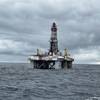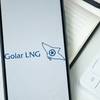In December 2013, Alibra’s market report front page read: “When in shipping, do as the Greeks do.” At that time, Alibra was referring to the fact that 31% of the LNG carrier orderbook had been ordered by Greek owners.
Billions of dollars in CAPEX were being pumped into natural gas exploration, as well as building infrastructure such as liquefaction and export terminals, especially in the US. Some 180 LNG carriers were ordered between January 2011 to December 2014 – many of them speculatively.
Of these vessels, 52 were ordered by Greek companies (29%). But the Greeks didn’t get the LNG play wrong as such – no one could ever have anticipated the shock drop in oil prices seen in mid-2014, which spooked energy markets and investors, leading to project delays, cancellations and crushing demand for LNG shipping. And that means vessel oversupply and depressed spot rates.
Most of the LNG carrier orderbook was ordered in anticipation of new liquefaction trains coming onstream, but depressed energy markets have delayed commissioning of important LNG infrastructure projects.
This year alone, four projects have been delayed in Canada, plus those in Cameroon and Oregon in the US, and a number of floating LNG (FLNG) liquefaction facilities.
However, since January, the Asia-Pacific LNG, Sabine Pass and Gorgon liquefaction trains and the second Gladstone LNG train have come online, which has helped improve vessel utilisation.
How quickly markets change in this business. Just two-and-a-half years later, LNG freight rates, formerly the source of so much optimism, are low and around 88% of the current LNG carrier orderbook is to be delivered from 2017 onwards.
Firm orders for seven LNG carriers have already been cancelled. Only four new LNG carriers have been ordered in 2016 so far, after Maran Gas and SK Shipping both ordered two. Maran has options for two more.










